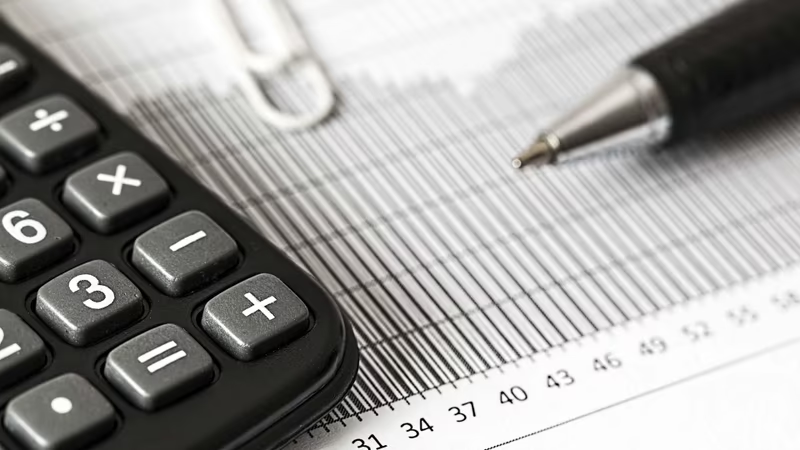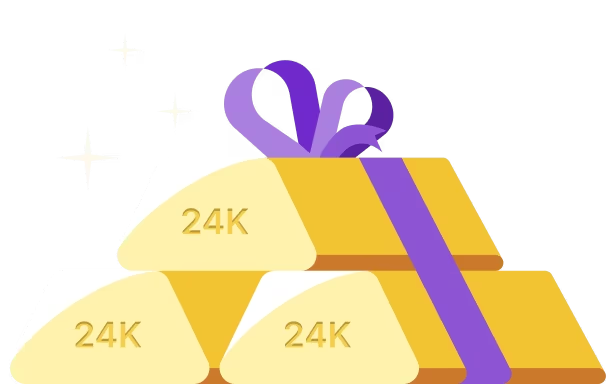Have you ever noticed how the price of any household essentials has increased over time. For exapmle, milk - its price has increased from ₹15 per litre to ₹60 per litre today. The answer to such a huge difference in just a few years is inflation. This is why you need to prepare for inflation or else it might prove to be detrimental to your finances
What is Inflation?
Inflation, in simple terms, is just a fancy term for increasing prices.
It means the cost of everything goes up, and it can affect all the things you buy on a regular basis - like groceries, fuel, and big-ticket items.
It erodes the value of your money and reduces your purchasing power over time, as we saw in the above examples.
Inflation is calculated by taking into account the increase in the cost of your basic or staple products, which can be thought of as normal purchases in larger volumes.
In other words, your household's inflation rate may vary.
According to an article, the average inflation rate hit its highest in India in 2022, at 6.82%, since 2014.
Currently, as per July 2022, the inflation rate in India is 6.7%.
Inflation is not necessarily good or bad. In fact, some inflation, say under 3%, can be a sign that the economy is healthy.
But is it really bad for your personal budget? Yes. It affects every aspect of your life and has a significant effect on each consumer's financial future.
While inflation increases asset resale value and, at a certain level, encourages spending, the downside is that consumers have to pay more for goods and services.
The economy is forced to bear the burden of higher prices, some of which increase sooner than others.
Why Does Inflation Happen?
Due to inflation, prices can change in any industry at any point in time. Usually, this occurs due to an increase in the cost of production or an increase in demand.
Price fluctuations can happen for many reasons, such as printing too many rupees, and sometimes the price of one item will go up while the price of another item may go down.
If you see the bigger picture, causes of inflation can be classified into three categories:
1. Demand-Pull Inflation
This occurs when consumer demand for goods and services exceeds what the economy is able to produce, which is fueled by a growth in the availability of credit and money.
This raises the demand for the good, which in turn raises the price.
More money means more prosperous individuals, and prosperous individuals mean happier shoppers.
Consequently, more money is spent, which raises prices. Due to a disparity between supply and demand caused by increased demand and a less flexible supply, prices are driven up.
2. Cost-Push Inflation
Prices of finished products and services rise in tandem with the cost of production. Cost-Push Inflation follows as a result.
This is super evident whenever there is a bad economic shock that affects the supply of important commodities.
3. Built-In Inflation
When workers anticipate pay increases to maintain their quality of living as a result of rising costs for goods and services, this is known as built-in inflation.
These workers consistently expect prices to rise and ask for higher pay, which drives up the cost of goods and services.
This wage-price spiral continues as one component leads to the other and vice versa, increasing their earnings means raising the price of products and services.
How is Inflation calculated in India?
There are two types of indexes that are used to measure inflation:
- Consumer Price Index (CPI)
- Wholesale Price Index (WPI)
These two metrics are used to analyse inflation rates at the retail level (or for the normal consumer), taking into consideration prices for things like food, gadgets, healthcare, education, and other monthly expenses a typical customer faces as well as the cost of goods purchased in bulk or at a discount by suppliers and retailers.
1. Consumer Price Index (CPI)
The CPI tracks changes in retail prices for 260 different items, some of which also include services.
Prices for representative goods and services are periodically collected by the Department of Statistics and Program Implementation, which also keeps track of any changes (often once per month).
To compare exchange rate metrics, a base year is used. This might be regarded as the "first" year within the specified time span.
In order to make calculations easier, the base year price is typically set to 100.
2. Wholesale Price Index (WPI)
WPI, as its name suggests, measures wholesale prices. The Reserve Bank of India used it until 2014 to determine monetary policy.
The Wholesale Price Index (WPI) measures the price of a typical basket of wholesale items.
It depicts overall expenditure after accounting for a basket of 697 products.
The WPI basket includes manufactured goods (65% of total weight), primary goods (20.1%) and fuel and electricity (5% of total weight) (14.9%). The Department of Trade and Industry calculates WPI.
Under former Governor Raghuram Rajan, the RBI shifted to a consumer price index as it overlooked services and bottlenecks between wholesalers and retailers.
How to prepare for Inflation?
Now that you’ve understood the basics - What is inflation? How does inflation happen? What are the types of inflation? and How is inflation is calculated?, let’s understand how you can prepare and safeguard yourself from it:
1. Upgrade your Budget
If your budget is still based on last year's, have a look at it and make any necessary adjustments. Review your budget and contrast it with your present spending.
When it comes to accomplishing your financial objectives, put the necessities first. Consider where you can cut expenses next.
Pro-Tip: If you have debt or a loan with a high interest rate, you might think about refinancing it or combining it to get a potentially lower interest rate.
2. Review your Investments
When inflation increases, it's crucial to consult your financial counsellor if you're an investor.
Your advisor can assist you in making sure that your investment allocation is appropriate for your level of risk tolerance.
You can better protect your money by varying the asset classes in your portfolio.
Must Read: Do you know about the Inflation effect on your investments? Be inflation-proof with Jar App
3. Avoid holding excess Cash
If you tend to keep a lot more cash on hand than you might need for an emergency fund, you might want to think about investing the extra money.
In comparison to a savings account, wise investments in the financial markets might yield a far larger return.
Read why savings accounts are making you poorer.
4. But don't Neglect your Savings either
Open a savings account, put three to six months' worth of spending in it, and only use the remaining funds—which should be in cash—for emergencies.
You should monitor savings accounts because even though the majority of the interest rates are modest, it's better to earn interest than receive none.
A bigger emergency fund accomplishes two crucial goals:
- You receive money in the event of a loss of income.
- By doing this, you can avoid using credit cards to pay for increasing expenses.
In light of growing prices, this is undoubtedly a challenging approach to put into practise.
But it's also about bringing in more money, delaying major expenditures, and discovering offers that can cut your cost of living.
You should put the money you saved into emergency savings.
Do you know why investing in gold for an emergency fund is a good idea?
5. Increase your Active and Passive Income
Your income needs to increase because it's possible that your salaries won't buy as much as they did before inflation.
You can achieve this by expanding your active and passive income sources.
Asking for a raise could help you enhance your positive earnings.
Due to the erosion of living wages brought on by inflation and the desire to retain talent, your company might be open to negotiating.
If you're not confident about asking for a raise, think about using your skills for a second job.
Additionally, think about how to develop a passive income source.
For instance, you can easily rent out excess room or storage for a little extra money if you have either of those things.
6. Postpone Big Purchases
Choosing between a house and a car might be hard. Inflation, though, is really about uncertainty. The setting is not ideal for major purchases.
This may make future survival more challenging if the rise lasts for a number of years.
The fact that major purchases frequently involve debt, adds to the issue. You could soon receive a big monthly payout if you purchase today.
Your future income will be lowered by whatever more debt you incur today.
7. Be Smart - Buy Strategically
You don't have to cut back on your spending in response to rising inflation; you just need to be aware of the higher price.
Shopping around is an effective approach to counteract rising costs. Use digital tools to find the best discounts without visiting several shops.
Also think about replacing items that have been severely affected by inflation with items that have survived the worst.
Your food bill, for instance, might have gone up, but a large portion of the price hikes is attributable to the rising cost of animal products.
Choose meat that is less impacted by inflation or try shifting to a more plant-based diet.
Here are more reliable tips for protecting your wealth from inflation.
Understanding inflation will help you fight it since you'll know how it affects your savings.
Keep in mind that keeping tabs on your income, expenses, and investments can help you retain your financial discipline.
Last but not least, maintain consistency in your financial planning, make future financial preparations, and endeavour to protect your savings from inflation.










